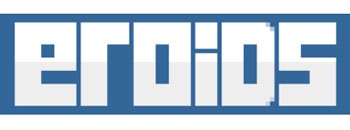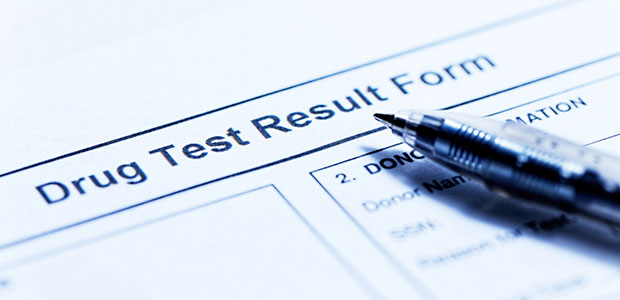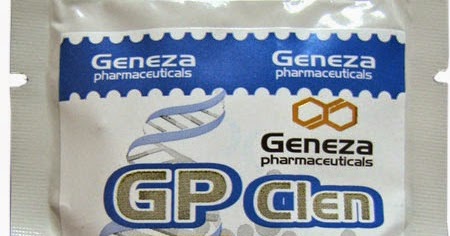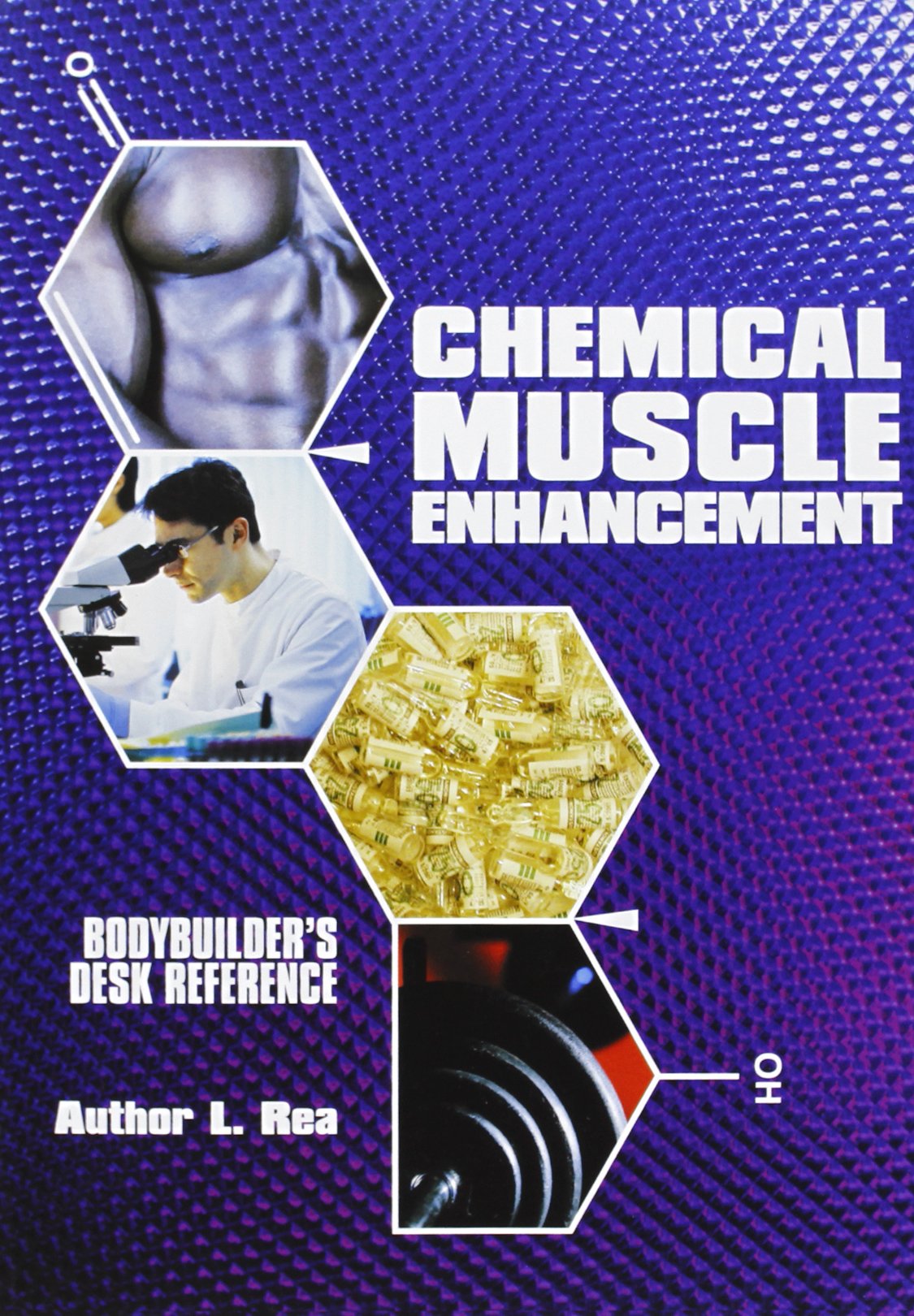Drug testing screening methods used at Organization of Competition Bodies (OCB), North American Natural Bodybuilding Federation (NANBF) and International Federation of Physique Athletes (IFPA) events are a means to determine eligibility. If competitors cannot successfully pass any screening method used, they will either not be allowed to compete if determined prior to the event (Ex.
Polygraph test), or will be disqualified and be removed from official results if determined after an event (Ex. Urine test).
Competitors cannot have used any substances on the OCB/NANBF/IFPA banned list during the specified duration periods specified on the list.
All participants at each OCB, NANBF and IFPA show must submit to polygraph screening for use of banned substances (polygraph test results from OCB or NANBF amateur shows can be honored for other OCB or NANBF amateur shows held within four weeks of each other). OCB and NANBF events that are designated as IFPA pro qualifiers conduct urinalysis on all those winning a pro qualifying placement. IFPA pro events conduct urinalysis on all those winning a placement that receives cash prizes.
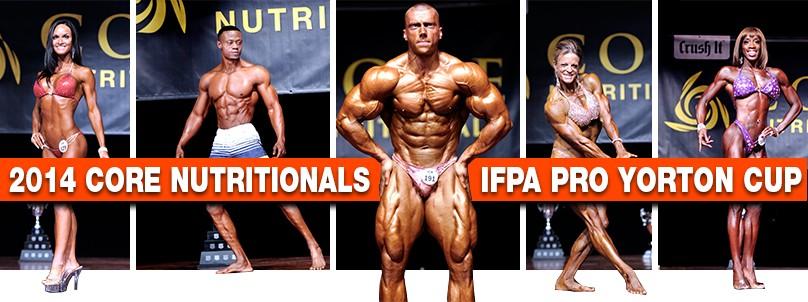
Competitors are responsible for ensuring they are tested at events. Polygraph examiners supply the OCB, NANBF and IFPA home offices with lists of contestants tested after each show. Urinalysis results go directly to the OCB/NANBF/IFPA home offices. If it’s discovered any participants who should have been polygraph tested were not, they will be disqualified and removed from the official results. If any pro qualifying winners do not provide a urine sample at IFPA pro qualifiers, eligibility to compete in the IFPA pro federation will be void. If any cash prize placement winners at IFPA pro shows do not provide a urine sample at the event, they will be disqualified, removed from the official results, and be ineligible for IFPA competition for six months from date of event.
Forms of drug testing in addition to the required may be requested of select competitors at any event at the promoter’s discretion and expense. This could include urinalysis, voice stress, blood, saliva, hair testing or other means of detection. Competitors are ultimately responsible for substances they take. If urine test results come back positive for any banned substance, competitors are disqualified regardless of what may have been responsible for the positive result and are banned from competing in the OCB/NANBF/IFPA for the disallowed duration for detected substances.
IFPA athletes are subject to out of contest (spot) drug testing throughout the year. IFPA members are responsible for keeping the IFPA up-to-date whenever changes to contact information occur.
BANNED SUBSTANCES
Products that contain ingredients that have chemical names similar to anything on the banned substance list could potentially cause a positive urine test result. Check with the NANBF/OCB/IFPA drug testing officials if uncertain as to whether a particular product is disallowed or not.
Anabolic Agents (Cannot have been used within seven years of contest date)
Including, but not limited to the following as well as their metabolites:
- 1-Testosterone (1-dihydrotestosterone), (1-Androstendiol) found in supplements such as 1-AD and 1-Androstendione
- 4-Hydroxytestosterone (Formestane)
- 6a-Methylandrostendione (17-hydroxy-6-alpha methyl-ethyletiochalon-3,20 dione), found in supplements such as M1P
- Androstendione (Androstendiol), found in supplements such as 4-AD
- Bolasterone
- Boldenone
- Calusterone
- Clenbutorol
- Clostebol
- Danazol
- Desoxymethyltestosterone (DMT), (17a-methyl-etioallocholan-2-ene-17b-ol), (17-methyl-delta-2-etioallocholane isomers), found in supplements such as Pheraplex, P-Plex, Phera Vol, Ergomax, Methyl-Plex, D-Stianozol, MASS Extreme and Nasty Mass InSLINsified
- DHCMT (Dehydrochloromethyltestosterone)
- Dihydrotestosterone (DHT)
- DNP (2,4 Dinitrophenol)
- Drostanolone
- Estra-4,9-diene-3,17-dione / 19-norandrosta-4,9-diene-3,17-dione (found in supplements such as FiniGenX Magnum, Tren Extreme, Trenaplex and Testraflex)
- Fluoxymesterone
- Formebolone
- Furazabol
- Mestanolone
- Mesterolone
- Methandrostenolone (Methandienone, Dianabol)
- Methandriol
- Methasterone (Methyldrostanolone), (Methasteron), (2a,17a di methyl etiocholan 3-one, 17b-ol), (2a,17a-dimethyl- 17b- hydroxy-5a-androstan-3-one), (2a, 17a-dimethyl-17b-hydroxy-5a-etiocholan-3-one), found in supplements such as Superdrol, S-Drol, Methyl Masterdrol, M-Drol, OmneVol, and Methyl-Drol XT
- Methenolone
- Methyl-1-testosterone, found in supplements such as M1T
- Methylnortestosterone
- Methyltestosterone
- Mibolerone
- Nandrolone (19-Norandrostendione), (19-Norandrostendiol)
- Norclostebol
- Norethandrolone (Ethylestrenol)
- Oxabolone
- Oxandrolone
- Oxymesterone
- Oxymetholone
- Peptides: AICAR, CJC-1295/CJC-1293, Follistatin/ACE-031, Fragment 176-191, GHRP’S/Ipamorelin/Hexarelin, GnRH (Triptorelin), IGF-1 LR3/IGF DES 1,3, Mechano Growth Factors, THYMOSIN BETA 4 (TB500)
- Prostanozol ([3,2-c]pyrazole-5alpha-etioallocholane-17beta-tetrahydropyranol), found in supplements such as Orastan-E, WIN-E and Winztrol
- Stanozolol
- Stenbolone
- Testolactone
- Testosterone (Note: For urinalysis, a testosterone to epitestosterone (T/E) ratio of 6:1 or greater is considered a positive detection of exogenous testosterone (or testosterone precursor) use.
- Trenbolone
Cannot be used after December 31, 2008 (or ineligible for 7 years from date of last use)
- Liothyronine sodium (L-triiodothyronine), (T3), found in brand names such as Cytomel
- 1,4,6-Androstatrien-3,17-dione (ATD), found in supplements such as Rebound XT, Novedex XT, Reversitol, Arimatest, DecaVol, Formadrol Extreme XL, Methyl 1-D, Methyl 1-D XL and Inhibit-E)
- 1,4-androstadiene-3,17-dione (1,4 AD), (Boldione), found in supplements such as Bold and MMA-3 Xtreme
- M-1,4ADD (17a-methyl-1,4-Androstadiene-3,17diol), found in supplements such as Methyl-Stak
- 2,3a-Epithio-17a-methyletioallo cholan-17b-ol (2a,3a-epithio-17a-methyletioallocholanol), (2a, 3a-Epithio-17a-Methyl- 5a- Androstan-17b-Ol), found in supplements such as E-Stane, EPI, Epistane, Epidrol, Epivol, Methly E, Epi-Max, Hemaguno HMG Xtreme, Havoc, Alpha Shred, eCuts, SOS 500
- 4-chloro-17a-methyl-andro-4-ene-3,17b-diol (4-chloro-17a-methyl-androst-1,4-diene-3-17b-diol), (17a-methyl-4- chloro- androsta-1,4-diene-3b,17b-diol), (4-chloro-17a-methyl-4-ene-3,17 diol), (4-Chloro-17a-Methyl-Androsta-1,4-diene-3, 17- diol) found in supplements such as ProMagnon 25, H-Drol, Super Halo, VNS-9 Xtreme, Halotest 25 and Halodrol-50
Cannot be used after December 31, 2009 (or ineligible for 7 years from date of last use)
- 12-ethyl-3-methoxy-gona-diene (6-17 dihydroxyetiocholone-3-ol propionate), found in supplements such as Propadrol
- 13-ethyl-3-methoxy-gona-2,5(10)-diene-17-one, found in supplements such as Max LMG, Revolt, Nasty Mass and InSLINsified
- 17b-Methoxy-Trienbolone, found in supplements such as Methoxy-TRN and Trenadrol
- 4-chloro-17a-methyl-etioallochol-4-ene-17b-ol-3, 11-dione, found in supplements such as Oxanabolan and Oxyguno
- 5a-androstana[2,3-c] furazan-17b-tetrahydropyranol (found in supplements such as Furaguno and Ortasan-A)
- Androst-4-ene-3,6,17-trione (4-Androstene-3,6,17-trione), (4-etioallocholen-3,6,17-trione), (4 –AT), found in supplements such as 6-OXO.
- Dehydroepiandrosterone (DHEA, 3-beta-Hydroxy-5-androsten-17-one, 3-beta-Hydroxyandrost-5-en-17-one, 3-beta- Hydroxy-D5-androsten-17-one, 3-beta-hydroxy-etioallocholan-5-ene-17-one, 5-Androsten-3beta-ol-17-one, Prastera, Prasterone, Fidelin, Fluasterone) in excess of 50 mg/day* DHEA is a naturally occurring steroid hormone produced in the adrenal glands by both men and women. Production of it decreases with age. DHEA is not recommended for people under 40 years of age, unless DHEA levels are known to be low (<130 mg/dl in women and <180 mg/dl in men). Therapeutic doses of 10-50mg of DHEA are used by many mature individuals (age 40+) for increase in perceived physical and psychological well-being (improved quality of sleep, more relaxed, increased energy, better ability to handle stress, improved depressive state)1. For men or women who have either adrenal insufficiency or hypopituitarism, although gluco- and mineralocorticosteroid replacement is needed, 50 mg a day of DHEA is sufficient for replacement2. Studies have shown no dangerous side effects from DHEA supplementation when taken in normal recommended therapeutic doses3. With respect to potential increase of the urinary testosterone/epitestosterone ratio (T/E) through DHEA supplementation, studies support DHEA use of 50mg/day or less having only slightly affected levels for a short period of time (2–5 h) without exceeding the 6:1 current acceptable ratio for OCB, NANBF and the IFPA4. DHEA’s effectiveness as an anabolic or energy-producing agent remains unproven.
- Dymethazine, Mebalozine (17beta-hydroxy 2alpha,17beta-dimethyl 5alpha-androstan 3-on azine) found in supplements such as Dymethazine
- Levothyroxine (L-thyroxine, T4), (found in brand names such as Levothroid, Levoxyl, Synthroid, Unithroid)
1 A.J. Morales, S.S.C. Yen 1994, C. Berr and E.E. Baulieu 1996, F. Labrie, P. Diamond 1997, M. Bloch 1999 Young J, Couzinet B, Nahoul K 1997, Arlt W, Justl H-G, Callies F 1998
van Vollenhoven RF, Morabito LM, Engleman EG, et al. Treatment of systemic lupus erythematosus with dehydroepiandrosterone: 50 patients treated up to 12 months. J Rheumatol. 1998;25:285-289. Khalsa, M.D., Dharma Singh with Cameron Stauth, Brain Longevity (New York: Warner Books, 1997), pages 401-402. ISBN: 0-446-52067-5
- Bosy TZ, Moore KA, Poklis A. The effect of oral dehydroepiandrosterone (DHEA) on the urine testosterone/epitestosterone (T/E) ratio in human male volunteers. J Anal Toxicol 1998;22:455-459.
- Wallace, M. B.; Lim, J.; Cutler, A.; Bucci, L. (1999). “Effects of dehydroepiandrosterone vs androstenedione supplementation in men”. Medicine and Science in Sports and Exercise 31 (12): 1788–92. PMID 10613429. Corrigan AB. Dehydroepiandrosterone and sport. Med J Aust. 1999;171:206-208. Welle S, Jozefowicz R, Statt M. Failure of dehydroepiandrosterone to influence energy and protein metabolism in humans. J Clin Endocrinol Metab 1990; 71: 1259-1264.
Cannot be used after December 31, 2014 (or ineligible for 7 years from date of last use)
- DMAA (also known as geranamine, methylhexanamine, dimethylamylamine, 1,3-dimethylamylamine)
(Substances included in the Designer Anabolic Steroid Control Act of 2014)
- 17α-methyl-androst-2-ene-3,17β-diol
- 17α-methyl-androsta-1,4-diene-3,17β-diol
- 17α-Methyl-androstan-3-hydroxyimine-17β-ol 17α-Methyl-5α-androstan-17β-ol
- 17β-Hydroxy-androstano[2,3-d]isoxazole
- 17β-Hydroxy-androstano[3,2-c]isoxazole
- 18a-Homo-3-hydroxy-estra-2,5(10)-dien-17-one
- 2α,17α-dimethyl-17β-hydroxy-5α-androstan-3-one
- 2α,17α-dimethyl-17β-hydroxy-5β-androstan-3-one
- 2α,3α-epithio-17α-methyl-5α-androstan-17β-ol
- [3,2-c]-furazan-5α-androstan-17β-ol
- [3,2-c]pyrazole-androst-4-en-17β-ol
- [3,2-c]pyrazole-5α-androstan-17β-ol
- 3β-hydroxy-estra-4,9,11-trien-17-one
- 5α-Androstan-3,6,17-trione
- 6-bromo-androstan-3,17-dione
- 6-bromo-androsta-1,4-diene-3,17-dione
- 4-chloro-17α-methyl-androsta-1,4-diene-3,17β-diol
- 4-chloro-17α-methyl-androst-4-ene-3β,17β-diol
- 4-chloro-17α-methyl-17β-hydroxy-androst-4-en-3-one
- 4-chloro-17α-methyl-17β-hydroxy-androst-4-ene-3,11-dione
- 4-chloro-17α-methyl-androsta-1,4-diene-3,17β-diol
- 4-Hydroxy-androst-4-ene-3,17-dione
- 6α-Methyl-androst-4-ene-3,17-dione
- Estra-4,9,11-triene-3,17-dione
Note: A T/E ratio >6:1 is deemed a violation of anti doping rules regardless of what compound is ingested. Any supplements used are at an individual’s own risk.
Growth Hormones (Cannot have been used within seven years of contest date) including, but not limited to:
- Gamma hydroxybutyrate (GHB)
- Human Chorionic Gonadrotropin (HCG)
- Pharmaceutical Human Growth Hormone (HGH)
- Somatropin
Prescription Antiestrogens (Cannot have been used within seven years of contest date) including, but not limited to:
- Arimidex
- Clomid
- Letrozole
- Nolvadex
Stimulants (Cannot have been used within six months of contest date):
- Prescription weight-loss substances used for bodybuilding purposes including, but not limited to the following as well as their metabolites:
- Amphetamine
- Diethylpropion
- Ephedra/Ephedrine/Ma-Huang
- Ethamivan
- Ethylamphetamine
- Fencamfamine
- Fenethylline
- Fenfluramine
- Fenproporex
- Heptaminol
- MDA (Methylenedioxyamphetamine)
- MDE (Methylenedioxyethylamphetamine)
- MDMA (Methylenedioxymethanphetamine)
- Mefenorex
- Methamphetamine
- Methylphenidate
- Modafinil
- Nikethamide
- Phendimetrazine
- Phenmetrazine
- Phentermine
Masking Agents (Cannot have been used within seven years of contest date)
Chemicals or drugs used for the purpose of deceiving or passing the polygraph test and anything used to attempt altering urine test results including, but not limited to:
- Epitestosterone (> 200 ng/mL)
- Probenecid
Prescription Diuretics (Cannot have been used within 3 weeks before contest date) including, but not limited to:
- Acetazolamide
- Bendroflumethiazide
- Bumetanide
- Canrenone
- Chlorothiazide
- Chlorthalidone
- Clopamide
- Cyclothiazide
- Dichlorphenamide
- Ethacrynic Acid
- Furosemide
- Hydrochlorothiazide
- Hydroflumethiazide
- Methclothiazide
- Metolazone
- Polythiazide
- Quinethazone
- Spironolactone
- Triamterene
- Trichlormethiazide
Miscellaneous:
- Insulin for the purpose of bodybuilding (Cannot have been used within seven years of contest date)
- Muscle Implants
- Synthol (Cannot have been used within seven years of contest date)
- For the purpose of physique competition, any medical procedures that extract fat and can show more leanness (Example: ab etching)
- Any of the substances on this banned list found in alternative forms available through “experimental” or “for research purposes only” labeling (Cannot have been used within seven years of contest date)
Answers to FAQ:
- 7-oxo-DHEA (also known as 7-keto-DHEA), 7alpha-hydroxy-DHEA (7alpha-OH-DHEA), and 7beta-hydroxy-DHEA (7beta- OH-DHEA) – DHEA metabolites that do not convert to androgens or estrogens or interact with sex steroid receptors – are not banned substances with OCB/NANBF/IFPA
- Natural diuretics (ex. Dandelion root) legally sold over-the-counter are not banned with OCB/NANBF/IFPA
- Athletes, like all others, may have illnesses or conditions that require them to take particular medications. If the medication an athlete is required to take to treat an illness or condition happens to fall under the prohibited list, a therapeutic use exemption may give that athlete the authorization to take the needed medicine. Criteria for granting a therapeutic use exemption are 1.) The athlete would experience significant health problems without taking the prohibited substance or method, 2.) The therapeutic use of the substance would not produce significant enhancement of performance, and 3.) There is no reasonable therapeutic alternative to the use of the otherwise prohibited substance or method.
- Hormone replacement therapy (HRT), e.g. supplementing with prescribed testosterone in any form to raise testosterone levels due to natural decreases that occur with aging (even if to just elevate levels to within ‘normal’ ranges), is NOT considered a medicinal exception. Persons using HRT would not be eligible for OCB/NANBF/IFPA competition.
